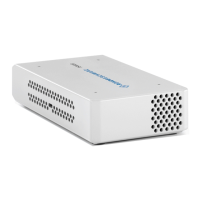Configuring the R&S TSME6
R&S
®
TSME6
61User Manual 4900.0033.02 ─ 08
6.2 Interacting with ROMES, R&S NESTOR, and R&S
ViCom
Measurements are performed on the R&S TSME6 via theROMES, R&S NESTOR, or
R&S ViCom interface. Depending on the installed technology options, the network is
either scanned for individual standards, or globally over all frequency bands.
The following sections briefly describe the basic requirements for interaction between
the R&S TSME6 and the ROMES, R&S NESTOR, or R&S ViCom interface. For details
on using these interfaces see the ROMES, R&S NESTOR, and R&S ViCom manuals.
6.2.1 Interacting with ROMES
Prerequisites
For measurements with the ROMES application, the following prerequisites apply:
For details on ROMES, see the manual provided on the software DVD.
●
ROMES installation (refer to ROMES manual)
●
ROMES option on dongle inserted (refer to ROMES manual)
●
Required technology options installed on the R&S TSME6 (see Chapter 6.1.3,
"Installing and managing software license keys - "Options"", on page 51).
●
Software options installed on the host PC (see information on the ROMES product
page on the Rohde & Schwarz website: https://www.rohde-schwarz.com/product/
ROMES > "Options")
After the R&S TSME6 has finished booting, start the ROMES software application.
Automatic firmware updates
Each time ROMES is started, the software automatically compares the firmware ver-
sion of the connected R&S TSME6 with the version currently available on the host PC.
If a newer version is available, it is copied to and installed on the R&S TSME6.
Up to three previously installed firmware versions are stored as backups and main-
tained on the R&S TSME6 (see also Chapter 6.1.1, "Obtaining device information -
"Device Info"", on page 47). Thus, it is not necessary to perform firmware updates on
the R&S TSME6 manually.
Interacting with ROMES, R&S NESTOR, and R&S ViCom

